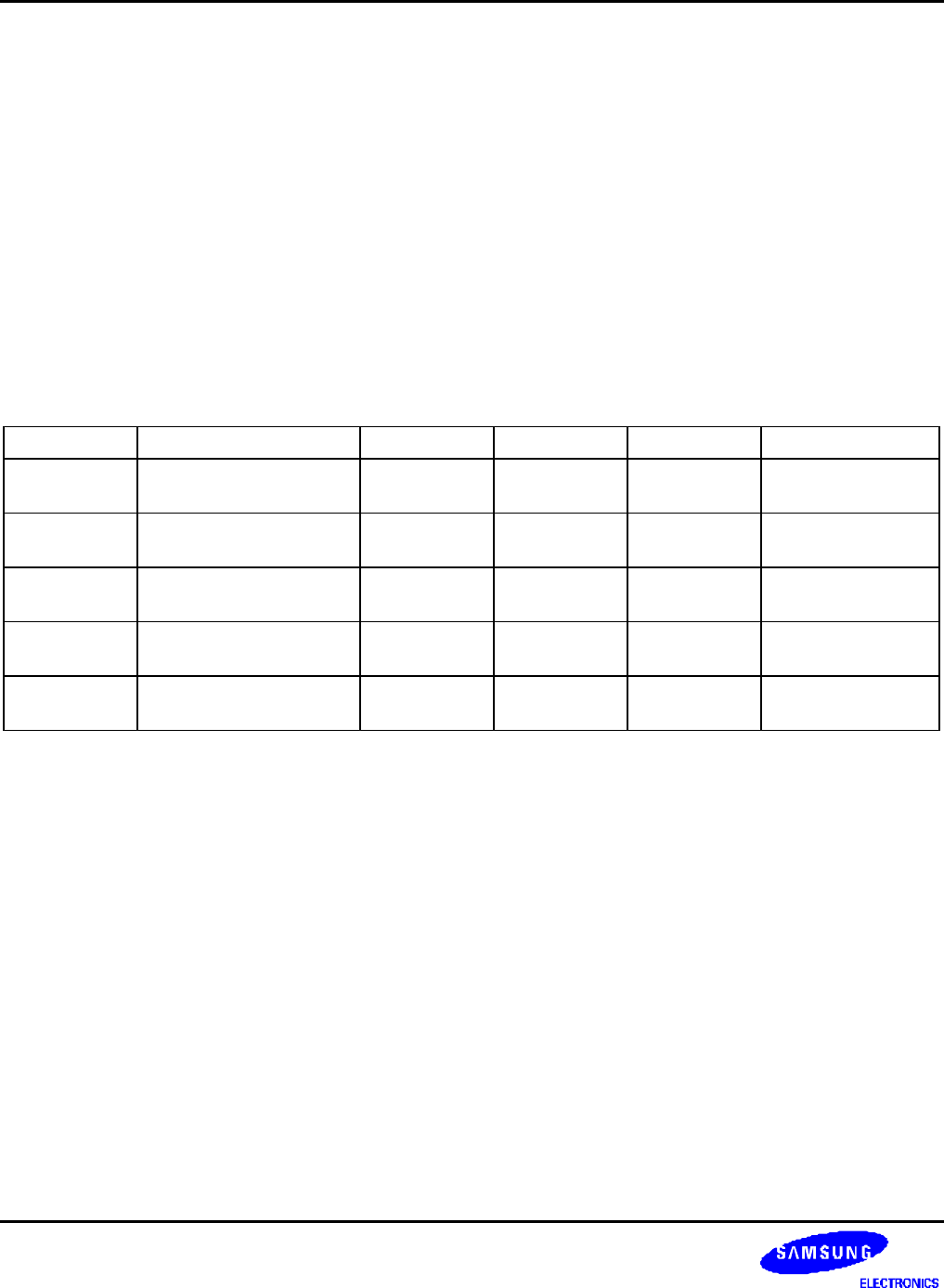
MMU ARM920T PROCESSOR
3-18
FAULT ADDRESS AND FAULT STATUS REGISTERS
On a data abort, the MMU places an encoded 4 bit value, FS[3:0], along with the 4-bit encoded domain number, in
the Data fault status register (FSR). Similarly, on a prefetch abort, in the Prefetch fault status register, intended for
debug purposes only. In addition, the modified virtual address associated with the data abort is latched into the fault
address register (FAR). If an access violation simultaneously generates more than one source of abort, they are
encoded in the priority given in Table 3-4 . The fault address register is not updated by faults caused by instruction
prefetches.
FAULT STATUS
The remainder of this chapter describes the various access permissions and controls supported by the data MMU
and details how these are interpreted to generate faults.
Table 3-4. Priority Encoding of Fault Status
Source Status Domain FAR
Highest
priority
Alignment 0b00x1 invalid MVA of access
causing abort
Translation Section Page 0b0101
0b0111
invalid
valid
MVA of access
causing abort
Domain Section Page 0b1001
0b1011
valid
valid
MVA of access
causing abort
Permission Section Page 0b1101
0b1111
valid
valid
MVA of access
causing abort
Lowest priority External abort on NCNB
access or NCB read.
Section Page 0b1000
0b1010
valid
valid
MVA of access
causing abort
NOTES:
1. Data FSR only.
Alignment faults may write either 0b0001 or 0b0011 into FS[3:0].
Invalid values in domain[3:0] occur because the fault is raised before a valid domain field has been read from a page
table descriptor.
Any abort masked by the priority encoding may be regenerated by fixing the primary abort and restarting the instruction.
NCNB means Non-Cacheable and Non-Bufferable.
NCB means Non-Cacheable but Bufferable.
2. Instruction FSR only.
The same priority applies as for the Data fault status register, except that alignment faults cannot occur, and external
aborts apply only to NC (Non-cacheable) reads.


















